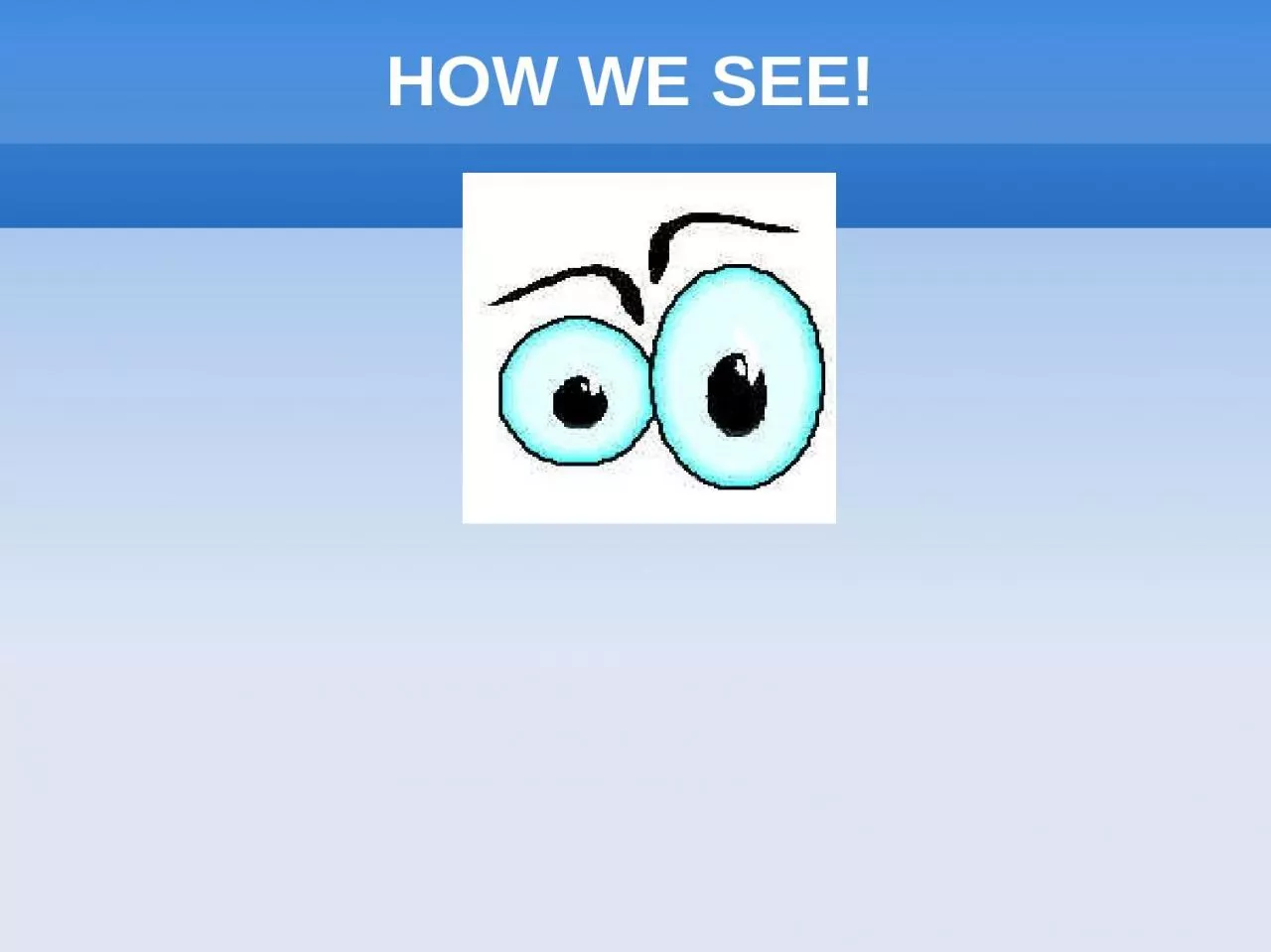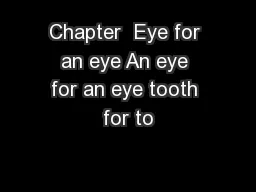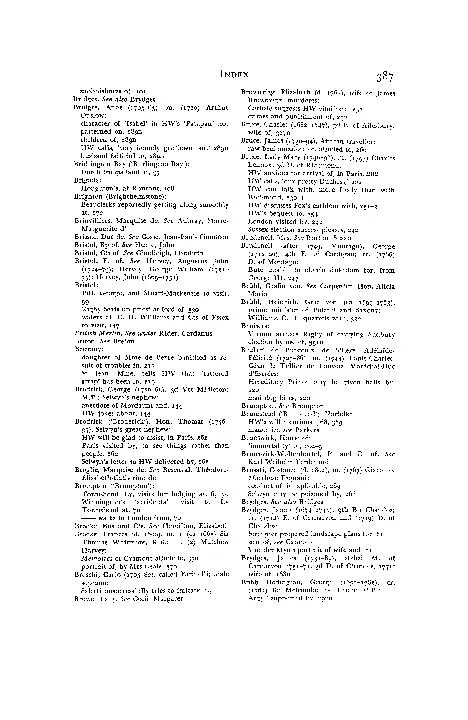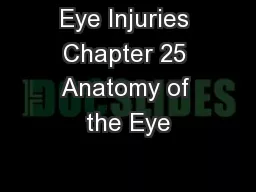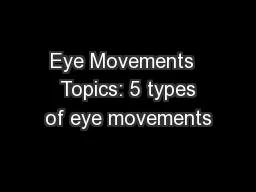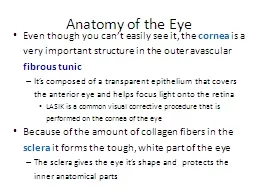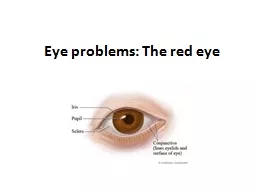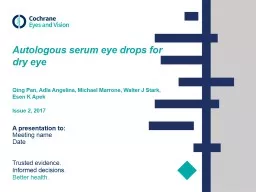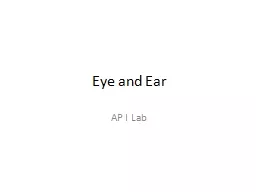PPT-HOW WE SEE! Eye Structure
Author : pamela | Published Date : 2024-03-13
External Layer Eye Protection Conjunctiva membrane lining the inside of eyelids and across the front of the eye Prevents objects from moving behind the eye Fat Deposits
Presentation Embed Code
Download Presentation
Download Presentation The PPT/PDF document "HOW WE SEE! Eye Structure" is the property of its rightful owner. Permission is granted to download and print the materials on this website for personal, non-commercial use only, and to display it on your personal computer provided you do not modify the materials and that you retain all copyright notices contained in the materials. By downloading content from our website, you accept the terms of this agreement.
HOW WE SEE! Eye Structure: Transcript
Download Rules Of Document
"HOW WE SEE! Eye Structure"The content belongs to its owner. You may download and print it for personal use, without modification, and keep all copyright notices. By downloading, you agree to these terms.
Related Documents

